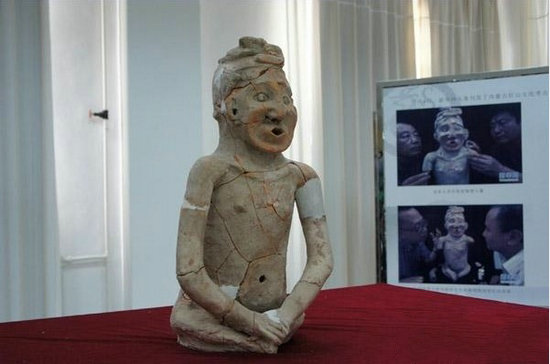 |
|
The Terracotta Portrait
|
The Institute of Chinese Archaeology Public Archaeological Professional Guidance Committee unveiled the Top 10 fine cultural relics of China Hongshan Culture in Chifeng city, Inner Mongolia autonomous region on Dec 28. In the selected 10 pieces of cultural relics, the Terracotta Portrait obtained the most votes. It was unearthed at Xinlonggou Site, Aohan Banner, Chifeng City, Inner Mongolia, and is in the possession of the Aohan Banner Museum.
According to information released by the Institute of Chinese Archaeology Public Archaeological Professional Guidance Committee, the 10 cultural relics fully demonstrate the major achievements in the archaeology and study of Hongshan Culture in 60 years. By means of selected public activities, people will get more of an in-depth understanding of the Hongshan culture.
China's mysterious Neolithic Hongshan culture is considered one of the earliest and most advanced ancient civilizations discovered to date. The Hongshan inhabited lands in northeastern China, between Inner Mongolia and today's Liaoning and Hebei provinces from around 4700 to 2900 BC. The name "Hongshan" is derived from Hongshan Mountain in Chifeng, ideally located between the Yellow River basin and the northern steppes of Inner Mongolia's autonomous region bordering Liaoning province. Though little is known about their daily lives, the Hongshan have become world famous for their exquisite jade sculptures, prestigious concentration of funeral offerings and unique ritual centers. Their patterns of technology and worship appear to have had an influence on later Chinese traditions.

